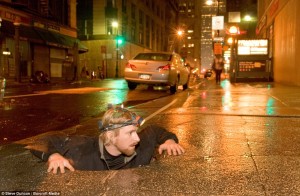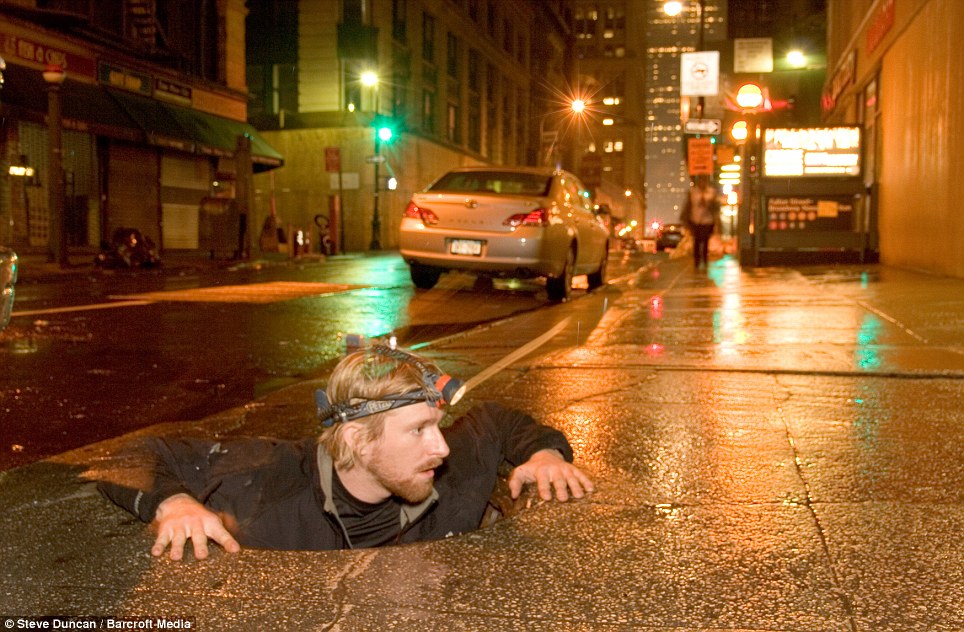Exploring The Underside Of NYC
First published by Jacki Lyden at NPR
 Urban explorer Steve Duncan goes underground, examining the hidden infrastructure of major cities all over the world: their tunnels, subways and sewers. Late in 2010, NPR’s Jacki Lyden joined Duncan and a group of subterranean adventurers in New York.
Urban explorer Steve Duncan goes underground, examining the hidden infrastructure of major cities all over the world: their tunnels, subways and sewers. Late in 2010, NPR’s Jacki Lyden joined Duncan and a group of subterranean adventurers in New York.
NPR is a thriving media organization at the forefront of digital innovation, NPR creates and distributes award-winning news, information, and music programming to a network of 975 independent stations. Through them, NPR programming reaches 26 million listeners every week.
Listen to Jacki Lyden at NPR
Steve Duncan lives dangerously. The urban explorer goes underground, examining the hidden infrastructure of major cities all over the world — their tunnels, subways, sewers.
In New York City, his favorite underground adventure, he could drown when the tide comes in or succumb to toxic gases in the sewers. He could be hit by a train or step on the third rail. And if he gets caught, he would be so under arrest.
So why does he do it? If you could have followed Alice down that rabbit hole, or Jules Verne to the center of the Earth, or gone to see the mandrake god in Pan’s Labyrinth, wouldn’t you do it? It’s seductive. It’s mysterious. It’s what lies beneath.
Duncan, 32, is a graduate of Columbia University working on his doctorate in urban history at the University of California. He looks like a human sparkler, with a shock of white-blond hair.
Call him what you will — including crazy. But while you sleep, he’s plunged far below the city surface — headlamp on, an urban mole, exploring the nether regions of New York.
……
[widgetkit id=11855]
Steve Duncan / Photos courtesy of Steve Duncan
‘The Big Thing Here Is Not To Get Killed’
Employees filling vending machines in Buell Hall didn’t give us a second glance as we headed downstairs to the basement. Steam tunnels below the university were made famous in the 1968 student sit-in. Duncan jimmied a locked door with a knife, and we wormed through darkness and beside pipes into a coffin-sized passageway next to heating ducts and the boiler. Oh, to be warm and dry — if dusty.
Each explorer seemed to sleep like a stone. Breakfast was bourbon and cough drops at 4 p.m. — for strength. Then, we climbed back up and emerged into the philosophy department — during the faculty Christmas party. Backpacks and hiking boots didn’t quite fit the dress code, so we retreated back into the night, reluctantly.
The second night out was beginning, and after a brief stop at the New York Athletic Association on swanky 59th Street — an underground river runs beneath the building — we ended up somewhere off Delancey Street, contemplating visiting abandoned subway stations. By now, it was after 1 a.m.
Unfortunately, the subways I saw were nowhere near as abandoned as I’d expected. There were no express trains, but we had to avoid service trains and other, unscheduled locals. Duncan gave this inspiring speech:
“The big thing here is not to get killed. So don’t touch the third rail. If a train’s coming, get out of the way. That might mean — in the worst situation I can imagine — that might mean standing in between two third rails and two pillars with trains coming on either side of you. You will get seen, but you won’t get killed.”
……

